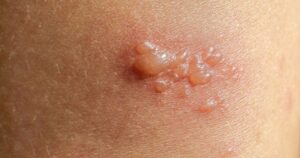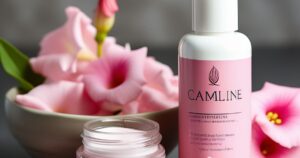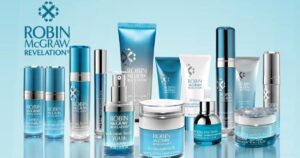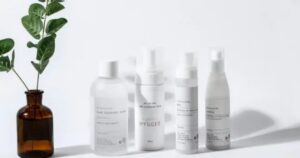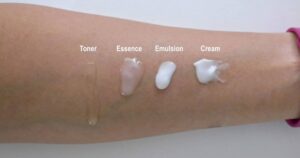In the world of skincare, knowledge is truly power. Understanding the ingredients we apply to our skin is fundamental to making informed choices for our personal care routines. One such ingredient that has gained attention is PEGs, or polyethylene glycols. But what exactly are PEGs and how do they impact our skin? This article aims to unravel the mysteries surrounding PEGs, exploring their origins, functionality, potential concerns, and alternatives. Stay informed and empower yourself in the realm of skincare.
Key Takeaways
- PEGs were developed as emulsifiers and surfactants in the cosmetic industry in the 1940s.
- PEGs have been widely used in various skincare formulations, improving product texture, stability, and absorption of active ingredients.
- PEGs can act as penetration enhancers, allowing other harmful chemicals to enter the skin more easily.
- There are concerns about the absorption of potentially toxic ingredients and their long-term effects on health.
The Origins of PEGs in Skincare
The origins of PEGs in skincare can be traced back to their development as emulsifiers and surfactants in the cosmetic industry. PEGs, or polyethylene glycols, were first introduced in the 1940s and quickly gained popularity due to their ability to stabilize and enhance the performance of skincare products. Over the years, PEGs have been widely used in various skincare formulations, including cleansers, moisturizers, and serums.
The history of PEGs in skincare is closely tied to advancements in cosmetic chemistry and formulation techniques. As the demand for more sophisticated skincare products grew, so did the need for effective emulsifiers and surfactants. PEGs proved to be a game-changer in this regard, as they not only improved product texture and stability but also helped enhance the absorption and delivery of active ingredients.
The development of PEGs in skincare has been a significant milestone in the evolution of the cosmetic industry. Today, PEGs continue to play a vital role in formulating high-quality skincare products that meet the needs and expectations of consumers worldwide.
The Functionality of PEGs in Skincare Products
PEGs are widely recognized for their versatility and effectiveness as emulsifiers and surfactants, allowing them to enhance the stability and performance of skincare products while also improving the absorption and delivery of active ingredients. They play a crucial role in moisturizers by providing a smooth and creamy texture, making them easier to apply and spread on the skin. PEGs also help to lock in moisture, preventing dryness and keeping the skin hydrated. However, it is important to note that some individuals with sensitive skin may experience adverse reactions to PEGs. While they are generally considered safe, certain studies have suggested that PEGs may cause irritation or allergic reactions in some individuals. It is advisable for those with sensitive skin to patch test products containing PEGs before incorporating them into their skincare routine.
Potential Concerns and Risks of PEGs in Skincare
Interestingly, potential concerns and risks surrounding the use of PEGs in skincare have prompted further investigation and discussion within the industry. While PEGs, or polyethylene glycols, are commonly used in skincare products for their emulsifying and moisturizing properties, there are growing concerns about their potential dangers and long-term effects on the skin and overall health. Studies have shown that PEGs can act as penetration enhancers, allowing other harmful chemicals to enter the skin more easily. This raises concerns about the absorption of potentially toxic ingredients and the long-term effects they may have on our health. Additionally, there is evidence suggesting that PEGs can cause skin irritation, allergic reactions, and disrupt the skin’s natural barrier function. As a result, consumers and industry professionals are calling for more research and transparency regarding the safety of PEGs in skincare products.
Research and Studies on the Effects of PEGs on Skin
Ongoing research and studies have shed light on the potential impact of PEGs on skin, revealing concerns regarding their potential to disrupt the skin’s natural barrier function and cause skin irritation and allergic reactions. This comparative analysis between PEGs and natural ingredients in skincare highlights the importance of making informed choices when it comes to selecting products for our skin.
Emotion-evoking bullet points:
- PEGs may strip the skin of its natural oils, leading to dryness and dehydration, while natural ingredients nourish and hydrate the skin, promoting a healthy complexion.
- Long-term use of products containing PEGs may compromise the skin’s ability to repair itself and maintain optimal health, whereas natural ingredients support the skin’s natural regenerative processes, promoting overall skin health.
Understanding the long-term effects of prolonged PEGs use on skin health is crucial in making informed choices about the skincare products we use. Transitioning into the subsequent section about ‘making informed choices: PEGs alternatives in skincare,’ we can explore safer and more effective options that prioritize the health and well-being of our skin.
Making Informed Choices: PEGs Alternatives in Skincare
When considering the potential risks associated with PEGs in skincare, it is essential to explore alternative options that prioritize the health and well-being of our skin. PEGs, or polyethylene glycols, are commonly used in skincare products as emulsifiers, thickeners, and penetration enhancers. However, concerns have been raised regarding their safety and potential side effects. As consumers increasingly prioritize natural and organic products, there has been a growing demand for PEGs alternatives in skincare. Thankfully, there are numerous natural skincare options available that can effectively replace PEGs in skincare formulations. Ingredients such as plant-based emulsifiers, natural thickeners like xanthan gum or guar gum, and botanical extracts can provide similar functions without the potential risks associated with PEGs. It is important for consumers to educate themselves on these alternatives and make informed choices that align with their values and prioritize the health of their skin.
Frequently Asked Questions
Are PEGs Natural Ingredients?
Pegs, or polyethylene glycols, are commonly used in skincare products due to their ability to act as emulsifiers and solubilizers. However, their safety and effectiveness are a subject of debate, with concerns raised about potential irritation and penetration into the skin.
Can PEGs Cause Skin Irritation or Allergies?
Pegs, commonly used in skin care products, have the potential to cause skin irritation or allergies. It is important to be aware of the relationship between pegs and dermatological reactions, as some individuals may be more susceptible to these effects.
Do All Skincare Products Contain Pegs?
Not all skincare products contain PEGs. PEGs can be harmful to the skin, causing irritation and allergies. However, there are natural alternatives available that can replace PEGs in skincare formulations.
How Do PEGs Affect the Environment?
The use of pegs in skincare products has a significant impact on marine life. Understanding the harmful effects of pegs on the environment is crucial in finding alternative ingredients that promote sustainability and protect our oceans.
Are There Any Regulations or Restrictions on the Use of PEGs in Skincare Products?
Regulatory guidelines and safety concerns surrounding the use of PEGs in skincare products exist. These guidelines aim to ensure the safety and efficacy of products, protecting consumers from potential risks associated with these ingredients.
Conclusion
In conclusion, PEGs have become a common ingredient in skincare products due to their functionality and versatility. However, there are concerns and potential risks associated with their use. While more research is needed to fully understand their effects on the skin, consumers can make informed choices by exploring alternatives to PEGs in skincare. By staying knowledgeable and informed, individuals can make decisions that prioritize their skin health and well-being.



